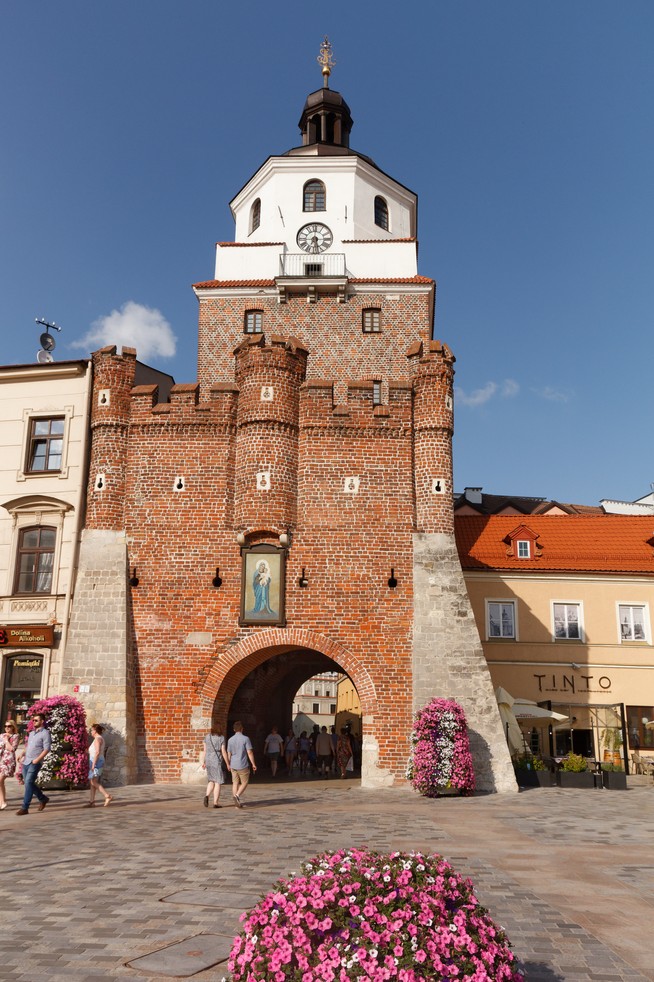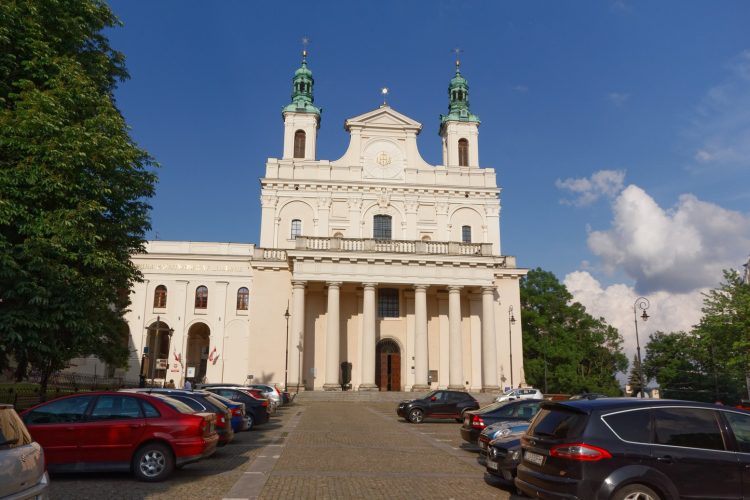Nestled in eastern Poland, Lublin is a city where the past and present blend seamlessly. Being one of the oldest cities in Poland – its history dates back to before the 12th century – it offers a rich tapestry of historical and cultural explorations. Below we chose for you the best things to do or see in Lublin.
Lublin Castle
Lublin Castle isn’t just one of the oldest royal seats in Poland, but also a repository of regional history. Initially established in the 12th century by High Duke Casimir II the Just, the castle has witnessed the ebbs and flows of Polish history. Today, it houses a museum showcasing an extensive collection of art and historical artifacts, allowing visitors to journey through Poland’s regal and cultural timeline.

Cracow Gate
The Cracow Gate (Brama Krakowska) in Lublin stands as a monumental and historic symbol of the city’s past. Dating back to the 14th century, this Gothic-style gate was part of the city’s fortification system, originally built to protect Lublin from potential invaders. Over the centuries, it has undergone several renovations, notably acquiring a Renaissance attic added in the 16th century, which reflects the architectural evolution of the region. The Cracow Gate is not only significant for its architectural beauty but also for its historical importance. It has been a witness to many of the city’s pivotal events and has become a cherished landmark, often serving as a meeting point for residents and a must-see attraction for visitors. Its location at the end of the Royal Route, connecting Lublin with Krakow, emphasizes its historical role in linking major Polish cities. Today, it continues to captivate with its grandeur and is a testament to Lublin’s rich cultural and historical heritage.

Lublin Old Town
Encompassed by sturdy stone walls, the Old Town is a quaint, picturesque locale where history breathes through the cobblestone streets. The medieval foundations at Po Farze Square, including remnants of a church, narrate tales of Lublin’s bygone era. Its well-preserved structures, charming squares, and vibrant eateries create a delightful atmosphere for leisurely exploration

Old Town City Hall (Crown Tribunal)
In the middle of the Old Town Square rises the building of the Crown Tribunal. The original town hall building, of Gothic form, was built in the 14th century and was wooden. It had two towers and an external staircase, and occupied a smaller area than the current building. After the fire of Lublin in 1389, only ruins remained. The next building was in the Gothic Style, made of brick. In the first half of the 16th century it was given a Renaissance appearance – the building was topped with an attic, and an external staircase leading to the first floor was added. After the fire of Lublin in 1575, another reconstruction of the town hall took place. The building, rebuilt in Renaissance style, was to resemble the town halls in Sandomierz and Tarnow.
From 1578, by the decision of King Stefan Batory, the building served as the Crown Tribunal. Noblemen from all over Lesser Poland used to come to Lublin to settle disputes. Bribery of judges and unjust verdicts determined the dissolution of this institution. In the 1680s, another, this time Baroque, reconstruction of the Tribunal took place. A second floor was added, and the tower was rebuilt. Its Baroque appearance is evidenced by the painting Fire of the City of Lublin, located in the Dominican Church. The building did not remain in this form for long, as in the years 1781-1787 it was redesigned again. It was then given a classicist character, which somewhat monumentalised the building. The building was extended, almost doubled in size, and the second floor for the land courts was also finished.

Lublin Cathedral
The Church of Saints John the Baptist and John the Evangelist was built in 1586-1604. The church was designed by one of the monks, John Mary Bernardoni, who partly modelled it on the Roman seat of the Jesuits – the Il Gesu temple. In the 18th century, Joseph Meyer decorated the interior of the temple with beautiful paintings depicting scenes from sacred scripture. The Jesuit temple became a cathedral in 1805, after the establishment of the Diocese of Lublin. After the destruction caused by the Second World War, the cathedral was rebuilt and in this form we can admire it to this day.

It is worth going inside for a closer look at the illusionist polychromes and the magnificent furnishings of the church. In the chancel is a 17th century altarpiece made of black Lebanese pear, now in its original ebony colour, and there are golden sculptures of saints. Also hanging in the chancel are two Baroque paintings, The Last Supper and Herod’s Feast. In the side chapels, in addition to the frescoes, we can see statues of saints, including Ignatius Loyola, and paintings.
In the side altar by the left aisle hangs an image of Our Lady of Weeping. On 3 July 1949, the image wept bloody tears, which were collected and placed in one of the stones in Mary’s crown.
Majdanek State Museum:
The Majdanek State Museum, once a site of horror during WWII as a concentration camp, now stands as a solemn reminder of the past. The museum offers a poignant reflection on the war’s atrocities, aiming to educate visitors about the historical truths of that era.
